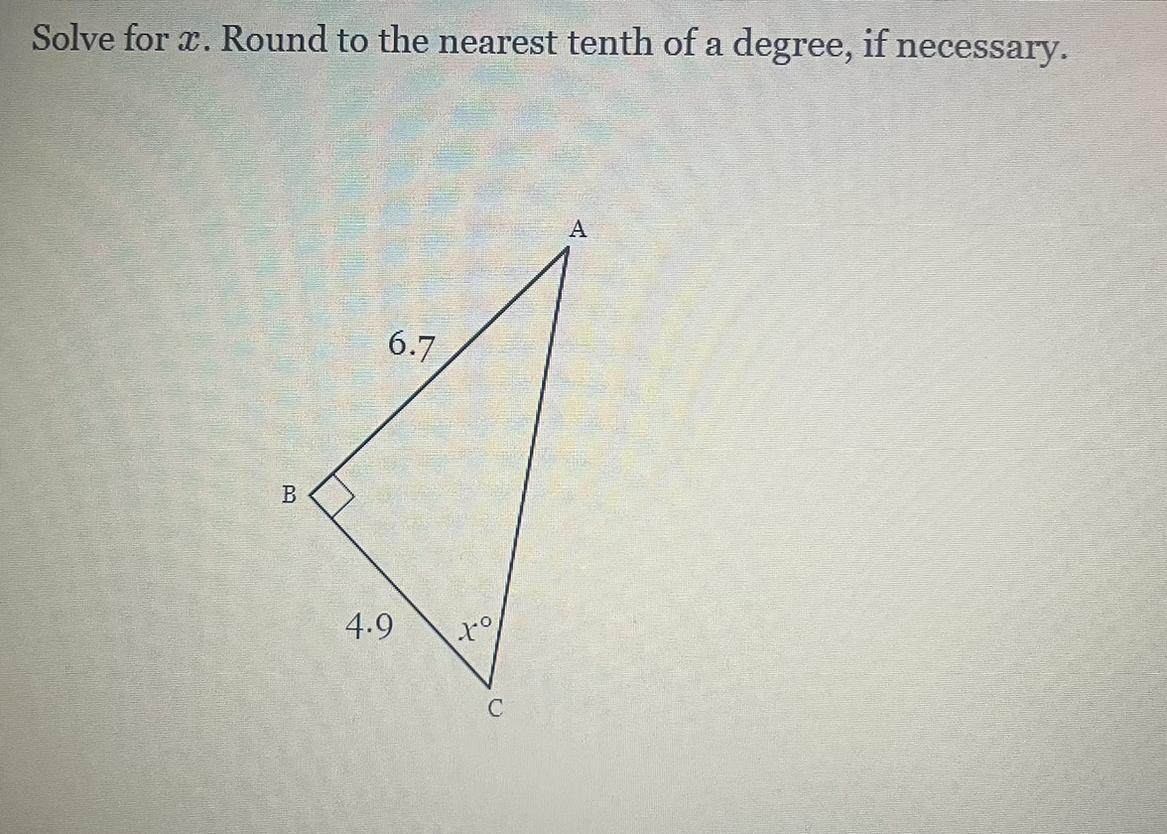Answers
The angle indicated by a green arc is 54 degrees.
What is the definition of a simple angle?A straight line's angle size is 180°; the sum of the angles in a triangle's size is 180°; and a triangle can also have acute as well as obtuse angles.
The fact that the sum of the angles in a triangle equals 180 degrees can be used to determine the value of the angle in the given figure.
To begin, note that the angle denoted by a blue arc is the exterior angle of triangle ACD. According to the Exterior Angle Theorem, this angle is equal to the sum of the two remote interior angles, denoted by red and green arcs.
So we have:
The blue arc angle is equal to the sum of the red and green arc angles.
We get the following equation when we plug in the given angle measurements:
98° = 44° + Green arc angle
We can simplify this equation as follows:
Green arc angle = 98° - 44° = 54°
The green arc represents an interior angle of triangle ABD. As a result, we can use the fact that the sum of a triangle's angles equals 180 degrees to calculate the value of this angle.
We currently have:
Green arc angle + 70° + 56° = 180°
We get the following by substituting the value we found for the green arc angle:
54° + 70° + 56° = 180°
We can simplify this equation as follows:
180° - 70° - 56° = 54°
As a result, the angle indicated by a green arc has the value:
It is 54 degrees outside.
To know more about Angle Value visit:
https://brainly.com/question/30937335
#SPJ1
Related Questions
Who knows this? I need help
#16
Answers
Answer:
Step-by-step explanation:
adjacent: [tex]\angle BOC, \angle EOD[/tex] (both are adjacent)
complementary: [tex]\angle BOC[/tex]
supplementary: [tex]\angle EOD[/tex]
vertical angles: [tex]\angle AOE[/tex]
In a recent survey, 60% of the community favored building a supermarket in their neighborhood. If 25 citizens are chosen, what is the variance of the number favoring the supermarket?
Answers
The variance of the number of citizens favoring the supermarket is 6.
To find the variance of the number of citizens favoring the supermarket, we need to use the binomial distribution formula:
Variance = n × p × (1 - p)
where n is the number of trials (25 in this case), p is the probability of success (0.6 in this case), and (1 - p) is the probability of failure.
Plugging in the values, we get:
Variance = 25 × 0.6 × (1 - 0.6)
Variance = 25 × 0.6 × 0.4
Variance = 6
The binomial distribution is a probability distribution that models the number of successes in a fixed number of independent trials, where each trial has only two possible outcomes, success or failure. In this case, the trials are the 25 citizens who were chosen, and the success is the event of favoring the supermarket, which has a probability of 0.6.
To learn more about variance follow the link:
https://brainly.com/question/14116780
#SPJ1
2. Solve based on the diagram below.
What is the value of angle x? How do you know (what type of angle pairs are they)?
Answers
Answer: 160
Step-by-step explanation: The straight line or line X is 180 degrees. So subtracted 20. This is because X is intersected by another line which makes the upper notch 20 degrees.
State the principle of mathematical induction
Answers
The principle of mathematical induction is a method of proof used in mathematics to prove that a statement is true for all natural numbers.
It is based on the idea that if the statement is true for one number, then it can be used to prove that it is true for the next number. Mathematical induction can be expressed mathematically as follows:
Let P(n) be a statement involving an integer n
Base Case: P(m) is true for some m
Induction Hypothesis: Assume P(k) is true for some k>m.
Induction Step: Show that P(k+1) is true.
Therefore, P(n) is true for all n>m
Learn more about Mathematical induction here:
https://brainly.com/question/30893280
#SPJ1
